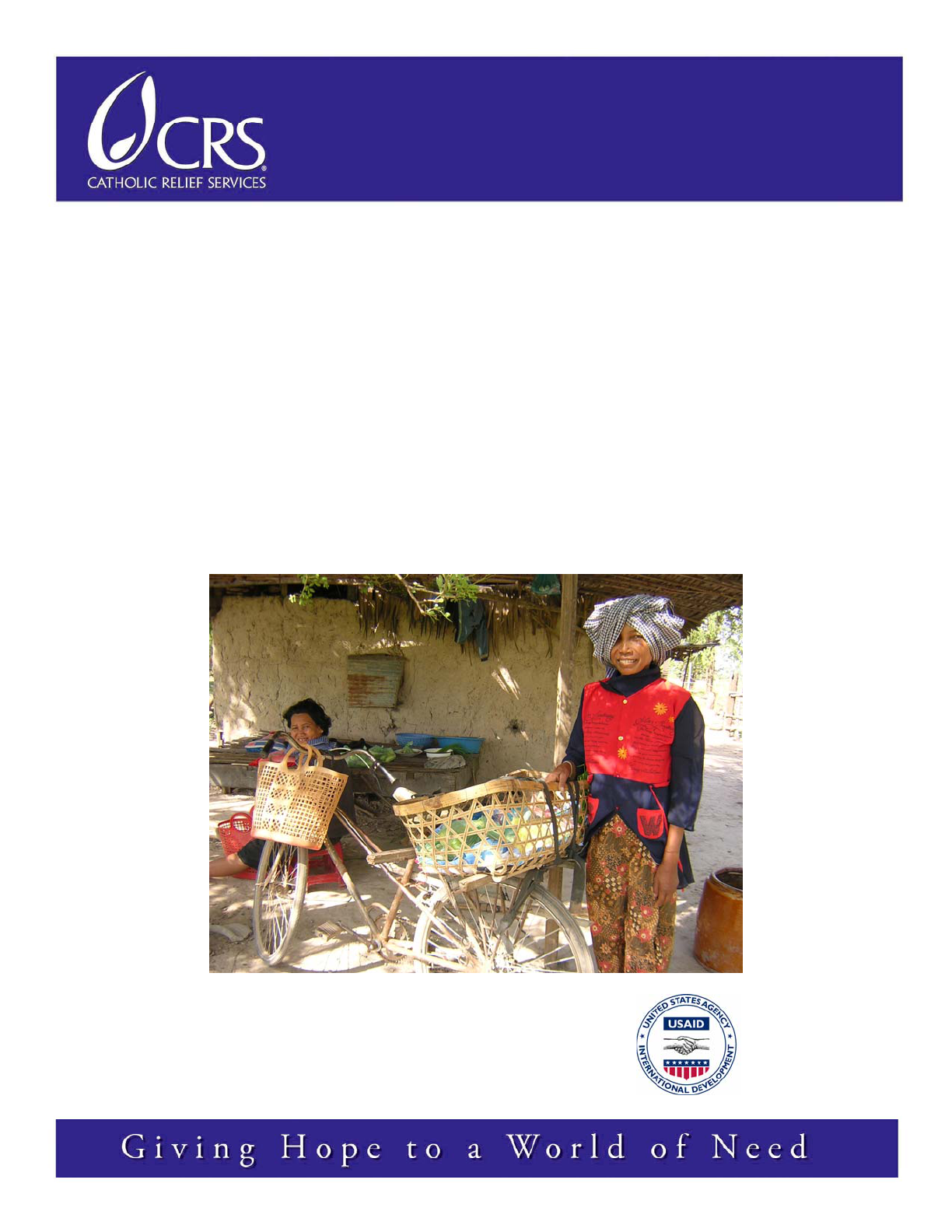
Checklist for an
Internal Audit
Muhota Kimotho and
Catholic Relief Services Microfinance

A
BOUT THE
A
UTHOR
Muhota wa Kimotho has a Masters and PhD in Economic Development and Banking from the
University of California, Los Angeles, and holds additional diplomas in Economic Development,
Advanced Credit Analysis, and Banking and Finance from various institutions in the U.S., the U.K.
and Europe. He was a lecturer in Economics, Finance, Money and Banking at the University of
Nairobi, and for 25 years worked for the London-based National Grindlays Bank/Kenya
Commercial Bank Group, eventually serving as Director of the Credit, Business Advisory, and
Legal Services departments. In May 2001, Mr. Kimotho joined Catholic Relief Services (CRS) as
a Senior Technical Advisor for Microfinance, and in 2002 become the CRS Microfinance Regional
Technical Advisor for South East Asia and the Pacific region. Currently he works for UNDP as its
Policy and Technical Advisor for Microfinance and Small and Medium Enterprise Development,
seconded as an Advisor to the Central Bank of Nigeria. Mr. Kimotho is a member of the Financial
Executive Networking Group (FENG), and another writing of his has appeared on the CGAP
Microfinance Gateway.
A
BOUT THE
P
UBLISHERS
Catholic Relief Services (CRS), founded in 1943, assists the poor and disadvantaged outside the
United States. CRS works to alleviate human suffering, promotes the development of people,
and fosters charity, justice, and human dignity in the world. CRS assists the poor solely on the
basis of need, not creed, race or nationality, and maintains strict standards of efficiency and
accountability. CRS currently operates in 99 countries and territories.
CRS Microfinance focuses its services on the poorest clients and on strengthening its partner
organizations that serve them. Its goal is to provide the self-employed poor, especially women,
with access to reliable and permanent financial services. As of December 2004, CRS reaches
over 850,000 microfinance clients in 29 countries in Africa, Asia, Europe, the Middle East, Latin
America and the Caribbean.
A
CKNOWLEDGMENTS
Catholic Relief Services Microfinance gratefully acknowledges the support of the United States
Agency for International Development (USAID) BHR/PVC in the publication and distribution of this
study under CRS/USAID Matching Grant FAO-A-00-99-00054-00. The views expressed in this
case study are those of the author and do not necessarily represent the views of USAID or CRS.
Readers may copy, translate or adapt this book for non-profit use—provided that such copies,
translations or adaptations are distributed free or at cost. Please give appropriate citation credit
to the author, Catholic Relief Services. Comments are welcomed and may be addressed to CRS
or the author at pqsdReques[email protected]g.
Version 1.01
Distributed by:
CATHOLIC RELIEF SERVICES
209 West Fayette Street
Baltimore, MD 21201, USA
www.crs.org
©2005 Catholic Relief Services
Cover photo: Mary Courtney
Ms. Eam Chreb, with a bicycle she purchased with a CRS microfinance loan from Thaneakea
Phum Cambodia to expand her business opportunities.
Final Editor: Ericka Reagor
P
REFACE AND
I
NTRODUCTION
Catholic Relief Services (CRS) is committed to providing dependable, continuous and
sustainable financial services to the poor by offering loan and secure savings
opportunities through community-based microfinance programs.
This
Checklist for an Internal Audit
is intended to assist microfinance institutions (MFIs)
in developing their internal audit capacities. It should be considered a template for
creating a similar checklist more specific to the operations of your particular MFI. It
needs to be adjusted to match the terms and methodology used in your MFI and your
guiding policies and procedures.
An underlying principle highlighted by this document is the need for comprehensive
written institutional policies and procedures to be in place. If those do not already exist,
gaps in policies and procedures can be identified through careful use of this checklist.
Duties and Responsibilities of an Internal Auditor
The duty of an internal auditor is to independently, impartially, and systematically
appraise the operating units and internal controls of an organization. He or she should
have a sound understanding of the systems and procedures of the organization as a
whole, as well as the specific roles and activities of each unit within it, and must be freely
able to communicate with anyone in the organization to obtain information.
An internal auditor determines whether an organization’s documented operating policies
and procedures are easily and clearly understood; whether they are sufficient; whether
they are used effectively and consistently; whether the organization’s management
effectively identifies and minimizes risks; whether staff consistently adhere to written
external regulations and internal policies and procedures; whether gaps in internal
controls or policies and procedures are present; and whether resources are used
efficiently and to the benefit of the organization. Furthermore, it is an internal auditor’s
function is to be directly and actively concerned with detecting and preventing frauds or
forgeries.
Internal auditing utimately is geared toward assisting all members of an organization to
fully understand and effectively perform their duties, and toward the achievement of the
organization’s overall objectives.
On the Use of this Checklist
The format of the checklist is designed to guide the process. Every question must be
answered: the internal auditor should check “yes,” “no,” or “not applicable (N/A)” and
comment accordingly. The comments are especially important inputs for the record,
particularly where the answer is “no.”
The “date” column should reflect the day the item is completed and answered. When the
internal auditor’s inspection and the checklist are complete, he or she will submit it to the
Branch Manager for review. The “Branch Manager initials” column provides space for
the Branch Manager to indicate that he or she has seen each item. It does not indicate
whether the Branch Manager agrees or contends the finding – that information is to be
included in the final Internal Audit Report (as discussed in Appendices C and D).
Some items are marked with either a single (*) or a double (**) star. A “No” answer to a
single-star question calls for urgent remedial action. A “No” answer to a double-star
question denotes a critical situation. For your reference, these items are also listed in
Appendix F.
To the internal auditor:
This checklist cannot substitute for a sound understanding of
auditing tasks and protocol, nor reduce your responsibility for thoroughness. It serves as
a guide, intended to help organize the audit process and to aid your memory. This
checklist is not exhaustive, and the audit team should review and update it regularly,
based on lessons learned.
Reporting the Results of an Internal Audit
An internal auditor should report directly to the Board of Directors and not to the Director
or the senior management of the MFI. Since the audit findings may concern
management at various levels, reporting to the same persons would create a potential
conflict of interests. The audit report itself should be written in such a way that the
identity of all contributors to the findings is protected. Otherwise, it will be increasingly
difficult for the auditor to gather sensitive, critical information in future audits. Finally an
individual should never serve as an internal auditor for a unit(s) for which he or she has
any direct operational or managerial responsibility.

T
ABLE OF
C
ONTENTS
Audit Area Checklist Numbers Page
Building and Premises 1-8 1
Safe 9-18 1
Cash Records 19-29 2
Appearance 30-34 4
Fixed Assets 35-47 4
Office Supplies 48-53 5
Operations Manual 54-58 6
General Ledger, Vouchers and Payments 59-69 7
Loan Disbursement 70-77 8
Loan Reimbursement 78-95 10
Monitoring Revenue and Income 96-97 12
Accrued Interest Recievable and Client Loan Records 98-117 13
Staff Discipline, Morale, Resignation and Training 118-132 15
Payroll 133-135 17
Sick and Annual Leave Records 136-138 18
Medical Coverage 139-144 18
Operational Weaknesses 145 19
Expenses 146-148 19
Frauds and Forgeries 149 19
Other Observations 150-155 20
Check on Major Balance Sheet Headings (table) 156-159 21
Important Ratios (table) 160 22

L
IST OF
A
PPENDICES
Appendix Page
A
B
C
D
E
F
Daily Cash Check and Reconciliation Procedures for Managers
Internal Controls
Credit Inspection Internal Audit Report
Financial Services Internal Audit Report
Job Description for an Internal Auditor
Single- and Double-Starred Checklist Items
23
27
31
33
35
37
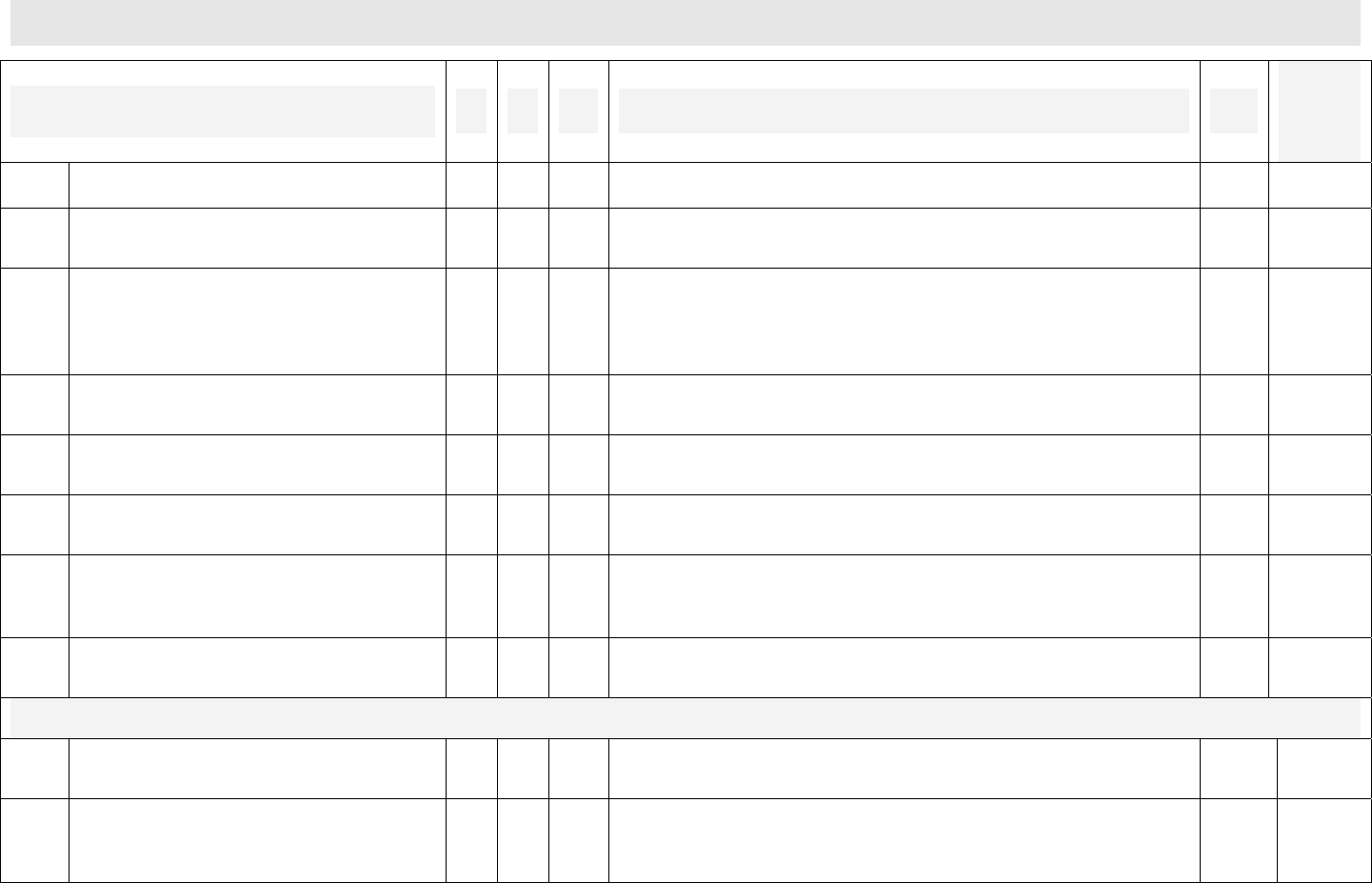
C
HECKLIST FOR AN
I
NTERNAL
A
UDIT
1
Branch Name: Date:
B
UILDING AND
P
REMISES
Y N N/A Comments Date
Branch
Manager
Initials
1
Is the branch easy to locate?
2
Are natural disasters rare at the
location?
3
Is the building secure against crime?
(Does it have permanent, solid walls,
ceiling and floors; is it located in a low
crime district?)
4
Is the gate locked overnight, with
adequate security personnel on site?
5*
Are all doors and windows well
secured to prohibit forced entry?
6*
Are at least two different keys required
to unlock the building’s doors?
7**
Are at least two different keys required
to unlock the strong room (safe room)
door?
8*
Is the strong room secured to prohibit
forced entry?
S
AFE
9*
Is the safe fixed to the wall or floor to
prevent its removal?
10**
Do safe custodians issue receipts for
all cash received, and are copies of
those kept in the safe?

C
HECKLIST FOR AN
I
NTERNAL
A
UDIT
2
SAFE, continued
Y N N/A Comments Date
Branch
Manager
Initials
11**
Are all changes of custodian for safe
key and combination, and the date
and time of each change, recorded in
a register?
12**
Are the safe key and combination held
separately at all times by senior staff?
13**
Do outgoing and incoming safe
custodians sign next to the change
entries?
14*
Do duplicate safe keys and
combinations exist?
15*
Are there written procedures to
access the duplicates?
16*
Are receipts kept whenever duplicate
keys or combinations leave or enter
the safe?
17**
Is more than one custodian present
when the safe is opened?
18**
Before the safe is opened, are the
main door and the door to the strong
room locked?
C
ASH
R
ECORDS
19**
Are all cash movements to and from
the safe recorded in a cashbook?
20**
Are entries in the cashbook and on
receipts recorded in both numbers
and words?

C
HECKLIST FOR AN
I
NTERNAL
A
UDIT
3
CASH RECORDS, continued
Y N N/A Comments Date
Branch
Manager
Initials
21**
Do the figures and words in all entries
agree?
22
Are receipts for cash received into the
safe prepared in triplicate?
Does the final copy remain in the
receipt book?
23
Are the receipts in the receipt book in
ascending numerical order?
24*
When a receipt is cancelled, are all
three copies left in the receipt book?
25
Is all cash in the safe arranged by
denomination, appropriately sealed,
and the amount labeled on each
bundle?
26**
Does the total cash count reconcile
with the recorded total in the
cashbook, the cash journal and in the
daily cash position register?
27
Is the branch cash limit in writing?
28*
Is the branch cash limit observed?
29*
Did you undertake a random check of
at least 50% of all cash transactions in
the cashbook to confirm that the
entries are correct?

C
HECKLIST FOR AN
I
NTERNAL
A
UDIT
4
A
PPEARANCE
Y N N/A Comments Date
Branch
Manager
Initials
30
Are receipts stamped with the branch
logo?
31
Does the staff look professional and
portray a good image?
32
Do the branch’s services adequately
meet client needs?
33
Does the Branch Manager hold
meetings with each Credit Agent
before he or she goes out to the field
and when he or she returns?
34
Are the stipulated working hours strictly
observed?
F
IXED
A
SSETS
35
Do the fixed assets (computers, desks,
filing cabinets, etc.) correspond with
what is listed in the branch’s printed
inventory?
36
Apart from normal wear-and-tear, are
the furniture, equipment and machines
well protected and in good condition?
37
Are the Credit Agents’ motorbikes and
keys left at the branch overnight?
38
Is a fuel log maintained to record all
fuel purchases?
39
Do the Credit Agents wear helmets at
all times while driving?

C
HECKLIST FOR AN
I
NTERNAL
A
UDIT
5
FIXED ASSETS, continued
Y N N/A Comments Date
Branch
Manager
Initials
40
Do all fixed assets have a Fixed Asset
Number clearly written on them in
indelible ink?
41
Are all computers, printers and
keyboards covered to protect them
when not in use?
42
Are all business visit destinations,
mileages and times of departure and
return recorded?
43
Do branch vehicles carry only
employees and Management
Committee members?
44
Are the vehicles cleaned regularly and
in good condition?
45
Are major defects to vehicles or
motorbikes repaired immediately?
46*
Are all vehicles and motorbikes fully
insured and licensed?
47
Are repair bills for vehicles and
motorbikes reasonable, taking into
account the age of the machines?
O
FFICE
S
UPPLIES
48
Does one employee manage the
ordering, control, storage and
disbursement of office supplies?
49
Are “re-order point” slips utilized, to
prompt the reorder of supplies?

C
HECKLIST FOR AN
I
NTERNAL
A
UDIT
6
OFFICE SUPPLIES, continued
Y N N/A Comments Date
Branch
Manager
Initials
50
Upon receiving items, does the supply
manager check that the items received
match the order invoice?
51
Are supplies kept locked?
52
Do department heads sign for
departmental stationery orders?
53
Does the Branch Manager ensure that
stocks are maintained at reasonable
but not excessive levels?
O
PERATIONS
M
ANUALS
54
Does the Branch Manager keep master
copies of the operations and
administrative manuals?
55
Are all sections of the operations
manual present and in the correct
order in the binder, and is the index up
to date?
56
Does each staff member have a copy
of the section that relates directly to his
or her job?
57
Do all employees understand the
sections relevant to their jobs?
58
Do all departments abide by the
operations manual?

C
HECKLIST FOR AN
I
NTERNAL
A
UDIT
7
G
ENERAL
L
EDGER
,
P
AYMENTS
V
OUCHERS AND
Y N N/A Comments Date
Branch
Manager
Initials
59
Is one employee designated to daily
verify all voucher entries to ensure
details are posted correctly to the
accounts?
60
Does he or she check the “brought
forward” and “carried forward” debit
and credit figures to ensure they are
correct?
61
Does the manager daily personally
scrutinize each balance in the ledgers
to ensure that the correct account
balances are reflected?
62
Is one employee designated to ensure
that all general subsidiary ledger
vouchers are fully completed?
63
Have all vouchers been approved and
initialed or signed, as needed, by all
parties?
64
When bills are paid in cash, is a receipt
issued for the amount?
65
Are full details recorded on vouchers
for branch expenses to any account
(including prepaid expenses)?
66
Are all “paid” vouchers cancelled or
perforated immediately after posting to
prevent their re-use?

C
HECKLIST FOR AN
I
NTERNAL
A
UDIT
8
GENERAL LEDGER, VOUCHERS AND PAYMENTS,
continued
Y N N/A Comments Date
Branch
Manager
Initials
67
Where debit vouchers are raised above
the limit of the Branch Manager’s
authority, is the amount within his or
her branch budget?
68
Are all cash advances paid to out-of-
office staff properly authorized and not
excessive?
69
Are all previous cash advances
resolved within five days of an
employee’s return to the office, and
before a new cash advance is
g
ranted?
L
OAN
D
ISBURSEMENT
70
Do all loan applications have the
signature or thumbprint of the
borrower, and have the borrower’s
photograph attached?
71
Do Credit Agents submit loan
agreements, loan application forms,
journals and signed reports five
working days before a disbursement
date?
72
Do both the Credit Manager and
Branch Manager approve all loan
documents before the Cashier releases
cash?

C
HECKLIST FOR AN
I
NTERNAL
A
UDIT
9
LOAN DISBURSEMENT, continued
Y N N/A Comments Date
Branch
Manager
Initials
73
Does the Cashier initial against the
signature of the Credit Agent, the
Credit Manager and the Branch
Manager on all loan approvals before
releasing cash for disbursement?
74
Does the Cashier prepare each loan
disbursement voucher in triplicate?
75
Do the Credit Agent, Credit Manager,
Branch Manager and Cashier sign
each voucher?
76
Does the Cashier keep the last copy,
and give the original and first copies to
the Credit Agent?
77
If a Credit Agent does not disburse the
total cash for loans:
a. Are the amounts on individual loan
agreements amended to reflect
the actual cash amount disbursed,
and then signed by the Credit
Agent, the Management
Committee Treasurer and
Secretary, and the client?
b. Is the disbursement voucher
amended to reflect the correct
amount disbursed, and is it signed
by the Credit Agent and the
Management Committee
Treasurer, Secretary and
President?

C
HECKLIST FOR AN
I
NTERNAL
A
UDIT
10
L
OAN
R
EIMBURSEMENT
Y N N/A Comments Date
Branch
Manager
Initials
78
Do member names and numbers, the
total number of members, and the
amounts borrowed, as recorded on
individual loan agreements, match the
data recorded in the Credit Agent’s
journal?
79
Do the Management Committee
Treasurer and Secretary always sign
where required in the Credit Agent’s
journal?
80
Does the Treasurer always count the
cash handed to her by the President to
confirm that the amount collected is
what is due?
81
Is cash received at the Village Bank
arranged by denomination?
82
Does the Credit Agent issue a receipt
to the Management Committee
President for the total amount of cash
received, and do both sign the receipt
to confirm it?
83
Do the Credit Manager and the Branch
Manager daily record the amount of
cash they should receive from each
Credit Agent that day?

C
HECKLIST FOR AN
I
NTERNAL
A
UDIT
11
LOAN REIMBURSEMENT, continued
Y N N/A Comments Date
Branch
Manager
Initials
84
Do the Credit and Branch Managers
confirm that the cash received by a
Credit Agent from a Village Bank is
recorded in the Credit Agent’s journal
and on the receipt, and that the
amounts agree?
85
Does the Cashier accept cash from the
Credit Agents only after the Credit and
Branch Managers initial the Credit
Agent’s journal and the receipt?
86
After the Cashier counts the cash and
finds the amount correct, does she or
he issue an official receipt to the Credit
Agent showing the amount in words
and figures?
87
Is cash received lodged in the safe
immediately after counting?
88
Does the Bookkeeper update the
cashbook, the cash ledger and the
daily cash position daily before
leaving?
89
Do separate staff members perform
cashiering and accounting functions?
90
Does the Branch Manager ensure that
the Cashier does not have access to
the accounting records, especially
those related to cash transactions?

C
HECKLIST FOR AN
I
NTERNAL
A
UDIT
12
LOAN REIMBURSEMENT, continued
Y N N/A Comments Date
Branch
Manager
Initials
91
At the end of each working day, does
the Branch Manager verify and
reconcile all daily entries and closing
balances in the cashbook, cash ledger
and daily cash position?
92
Is action on loans in arrears prompt
and continuous?
93
Do two Credit Agents go to collect
arrears, to avoid potential one-to-one
disagreements with a client?
94
Does the Branch Manager verify
arrears by personally visiting clients in
default?
95
Is the amount of cash from arrears
collected recorded in the Credit Agent’s
journal, and is that amount handed
over to the Cashier on the same day it
is collected?
M
ONITORING
R
EVENUE AND
I
NCOME
96
Does the Branch Manager reconcile all
entries to the interest-earned account?
97
Is a register or passbook maintained to
record all interest earned?

C
HECKLIST FOR AN
I
NTERNAL
A
UDIT
13
A
CCRUED
I
NTEREST
R
ECEIVABLE AND
C
LIENT
L
OAN
R
ECORDS
Y N N/A Comments Date
Branch
Manager
Initials
98
Does the number of outstanding loans
upon the date of this audit agree with
the number shown on the latest return
submitted to Head Office?
99
Does the total value of the current
outstanding loans agree with the value
shown on the latest return submitted to
Head Office?
100
Is the number of loans outstanding
equal to or less than the number of the
branch’s clients?
101
Do all loans outstanding meet the
branch’s lending criteria? Have all of
them been acknowledged by the
Branch Manager?
102
In all cases, are interest rates on loans
calculated correctly?
103
Did you ascertain, by doing a sample
check, that all the loans granted by the
branch are to genuine identities?
104
Did you verify, by doing a sample
check, that there were no loans
granted by proxy?
105
What is the number and value of loans
in arrears? (A loan is considered to be
in arrears one day after it is due for
repayment.)
(Please list)

C
HECKLIST FOR AN
I
NTERNAL
A
UDIT
14
ACCRUED INTEREST RECEIVABLE AND CLIENT
LOAN RECORDS, continued
Y N N/A Comments Date
Branch
Manager
Initials
106
What is the number and value of loans
considered “portfolios at risk”? A loan
is considered at risk immediately after
repayment falls into arrears.
(Please list)
107
What is the number and value of loans
written-off? A loan is written-off if it is
90 days in arrears.
(Please list)
108
Is Head Office approval obtained
before all write-offs?
109
Do the calculations for loans in arrears,
for portfolios at risk, and for loans
written-off correspond with the
numbers reported on the latest return
submitted to Head Office?
110
Did you undertake at least a 50%
random check to confirm that all clients
have only one loan?
111
What is the growth rate of number and
value of loans over the last two
quarters?
(Please list)
112
Do your growth rate calculations
(above) agree with those reported by
the branch?
113
Is cash received by loan repayments
handed over to the Cashier on the
same day it is received?

C
HECKLIST FOR AN
I
NTERNAL
A
UDIT
15
ACCRUED INTEREST RECEIVABLE AND CLIENT
LOAN RECORDS, continued
Y N N/A Comments Date
Branch
Manager
Initials
114
Did you undertake a random check on
at least 25% of all loans to determine
whether the interest collected is
correct?
115
Did you undertake a random check on
at least 10% of all portfolios to
determine whether interest due to the
branch been collected and credited to
the appropriate revenue account?
116
Are detailed files maintained for each
client?
117
Are clients who have dropped out
recorded in the register, listing the full
name, passbook number, name of the
Village Bank and the reason for
leaving?
S
TAFF
D
ISCIPLINE
,
M
ORALE
,
R
ESIGNATION AND
T
RAINING
118
List staff actually seen during this audit by title and number of individuals in that role:
Title (Number of Persons) Title (Number of Persons)
Branch Manager _____
Credit Manager _____
Credit Agent _____
Bookkeeper _____
Cashier _____
T
OTAL number of staff seen: _____
119
Does the total number of staff actually
seen agree with Head Office’s record
for staff for the branch?

C
HECKLIST FOR AN
I
NTERNAL
A
UDIT
16
STAFF DISCIPLINE, MORALE,
TRAINING, continued
R
ESIGNATION AND
Y N N/A Comments Date
Branch
Manager
Initials
120
In your opinion, is the number of staff
currently appropriate?
If not, which positions should be
reduced or augmented?
121
Do you consider all staff to be well
trained in performing their job
functions?
If not, which individuals require
attention, and what training do you
recommend?
122
Is the branch’s on-the-job training
adequate?
123
Are all staff utilized to their full
capacity?
124
In case of unexpected absence, are
there alternate individuals on staff to
fulfill the work?
125
Do the performance evaluations on file
accurately reflect individual employees’
performances?
126
Do the management’s interactions and
relationships with staff encourage
participation and commitment?
127
Is the Branch Manager effective?
(Please comment)
128
Do Credit Agents report to Village Bank
meetings on time?
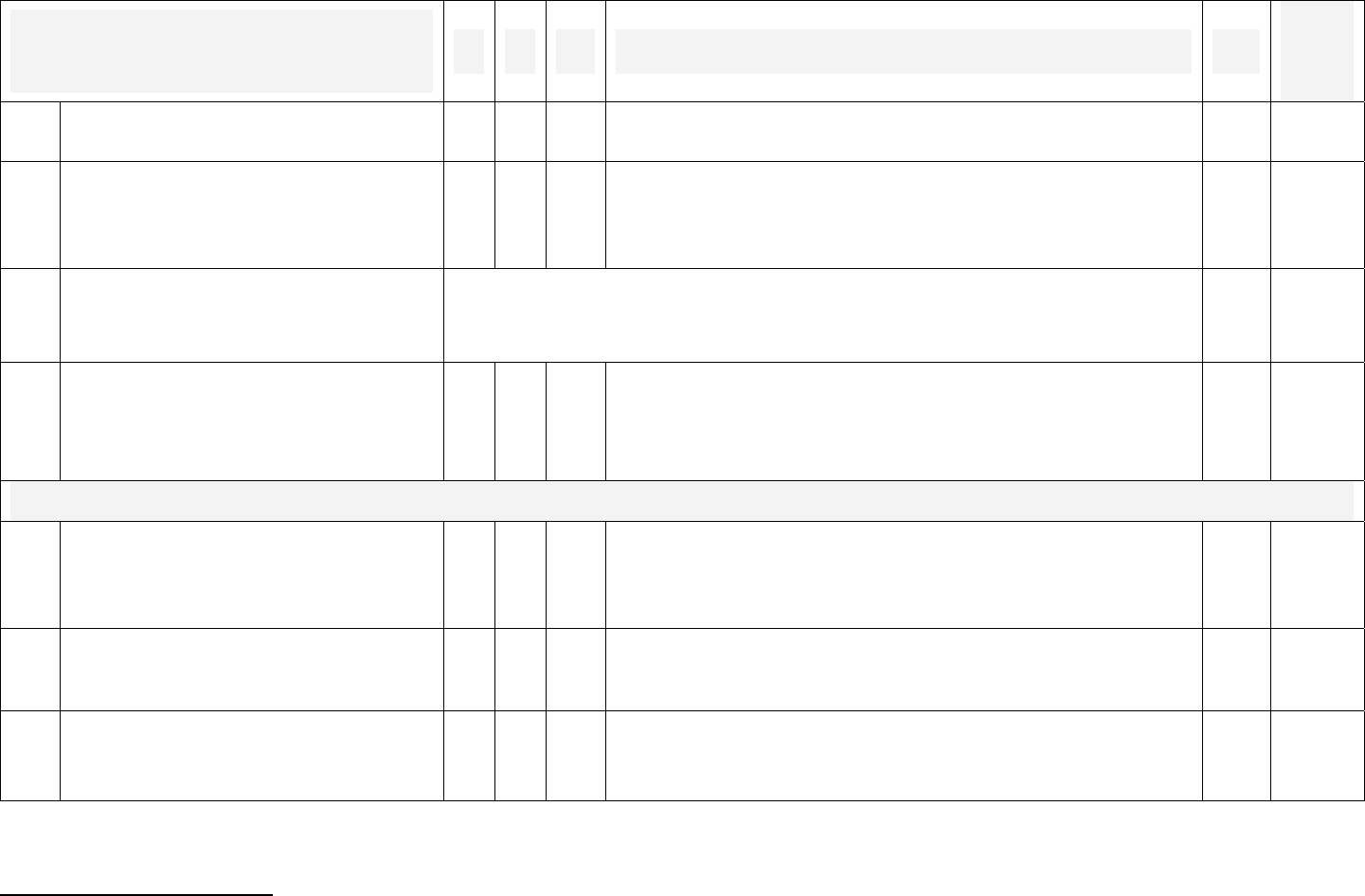
C
HECKLIST FOR AN
I
NTERNAL
A
UDIT
17
STAFF DISCIPLINE, MORALE, RESIGNATION AND
TRAINING, continued
Y N N/A Comments Date
Branch
Manager
Initials
129
Are Credit Agents rotated to avoid
collusion?
130
Does the Credit Manager regularly
undertake visits to the Village Banks to
get feedback from clients on how their
needs are being met?
131
How would you describe staff morale at
the branch?
(Please comment)
132
Is high staff turnover a concern at the
branch?
If yes, what are frequent causes for
resignation?
P
AYROLL
133
Does the total monthly debit listed on
the master payroll voucher agree with
the monthly amount debited to the staff
emoluments account?
134
Does the financial controller initial all
alterations or cancellations to the
master payroll voucher?
135
Are contra entries on the total payroll
debit transferred correctly to the
*
appropriate account?
*
For example, are leave allowances and recoveries for advances reversed to credit the prepaid expenses account?

C
HECKLIST FOR AN
I
NTERNAL
A
UDIT
18
S
ICK AND
A
NNUAL
L
EAVE
R
ECORDS
Y N N/A Comments Date
Branch
Manager
Initials
136
Are all staff sick and annual leave
absences recorded?
137
Does the branch maintain a leave
roster?
138
Is the staff leave roster kept up-to-
date?
M
EDICAL
C
OVERAGE
139
Are all staff medical claims recorded?
140
Are sufficient details of an employee’s
family -- spouse’s full name, number of
children, marriage and birth certificates
– included with all medical claims?
141
Are claim forms always signed by the
employee submitting the claim?
142
Is an original doctor’s, laboratory or
pharmacy receipt always attached to
medical claim form?
a
143
Does the CEO or COO at Head Office,
as well as the Branch Manager, sign all
medical claim reimbursements?
144
Is the stipulated maximum for medical
claim expenses per employee, per
year, strictly observed?
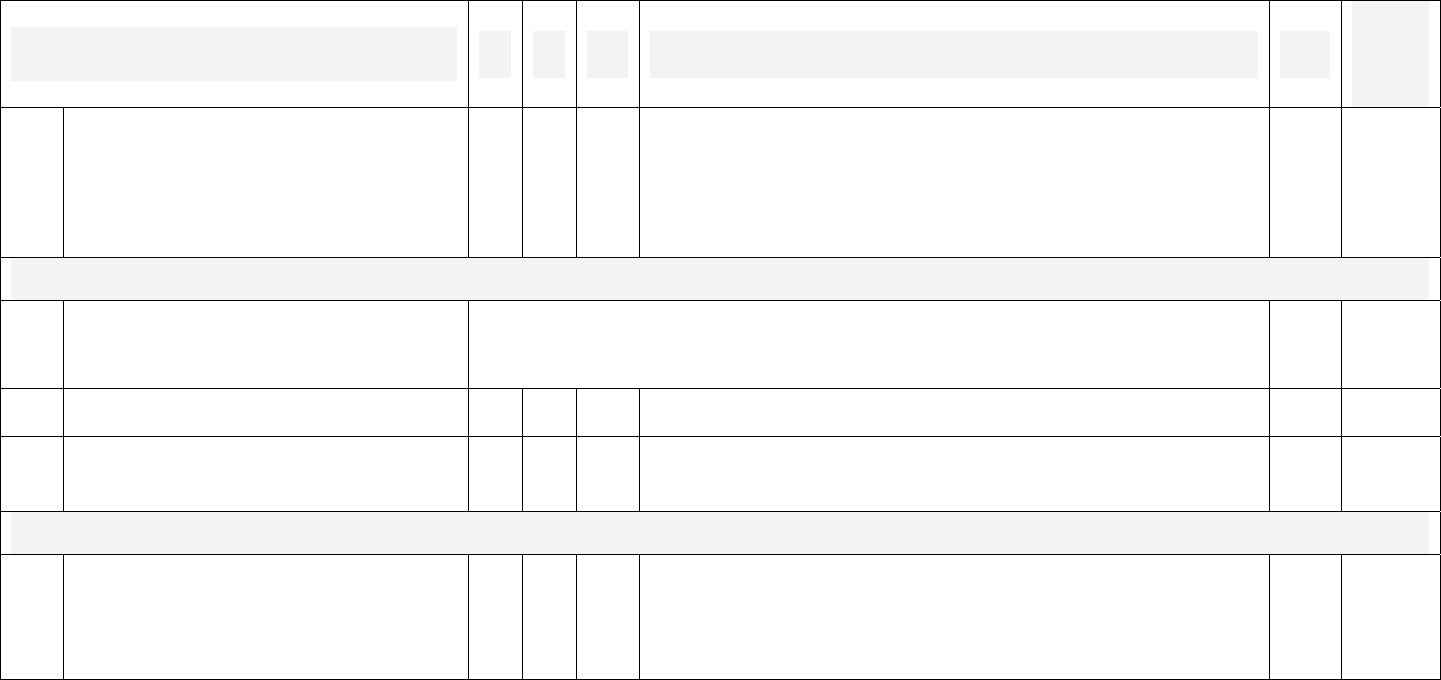
C
HECKLIST FOR AN
I
NTERNAL
A
UDIT
19
O
PERATIONAL
W
EAKNESSES
Y N N/A Comments Date
Branch
Manager
Initials
145
In your opinion, are there any
operational weaknesses at this
branch?
If so, what are they and how could they
be addressed?
E
XPENSES
146
Are costs effectively controlled?
(Please comment)
147
Are all costs approved by Head Office?
148
Did you note any unauthorized
expenses? If so, give full details.
F
RAUDS AND
F
ORGERIES
149
Have there been any frauds or
forgeries at the branch?
If so, were they reported to Head
Office?

C
HECKLIST FOR AN
I
NTERNAL
A
UDIT
20
O
THER
O
BSERVATIONS
Y N N/A Comments Date
Branch
Manager
Initials
150
Has all revenue due to the branch
been collected and credited to the
appropriate revenue account?
151
Are the branch’s marketing, business
development and relationships with
clients good and effective?
(Please comment)
152
Who are the new competitors in the
area?
(Please list)
153
Are the branch’s privileged records – for
example loan and staff files – locked in
a fire-proof cabinet to which only
authorized personnel can gain access?
154
Are all files withdrawn recorded to
ensure their return?
155
Are records kept in good condition and
in an orderly manner, to facilitate their
easy retrieval?
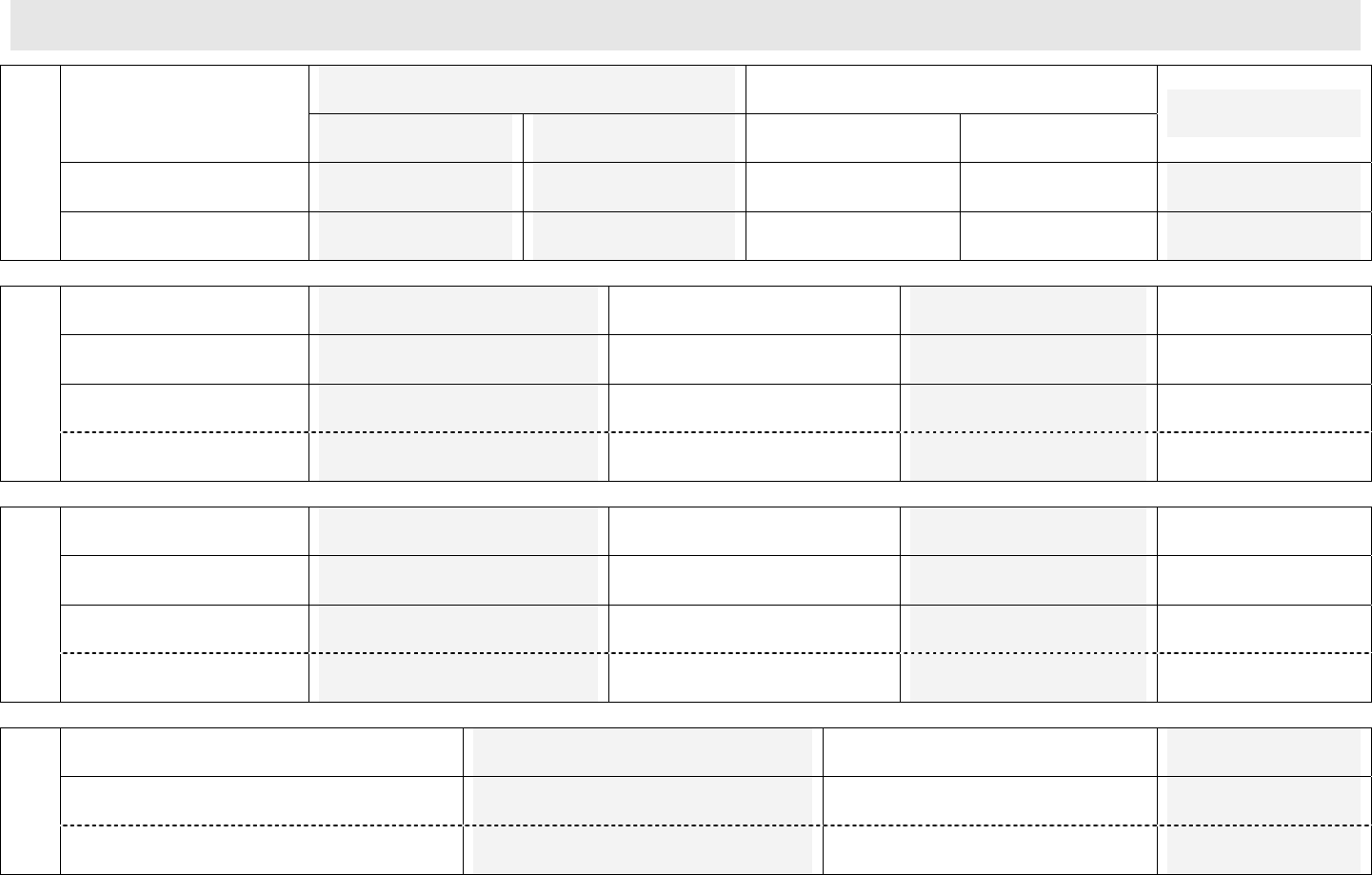
C
HECKLIST FOR AN
I
NTERNAL
A
UDIT
21
C
HECK ON
M
AJOR
B
ALANCE
S
HEET
H
EADINGS
156
N
UMBER OF LOANS (CLIENTS) LOAN AMOUNT
V
ARIANCE
Last Audit This Audit Last Audit This Audit
Loans (Assets)
Savings (Liabilities)
157
B
UDGETED ACTUAL ACHIEVEMENT (%) VARIANCE
Operating Revenue
Less: Operating Costs
Operating Surplus
158
L
AST YEAR BUDGET THIS YEAR ACTUAL THIS YEAR VARIANCE
Operating Revenue
Less: Operating Costs
Operating Surplus
159
A
MOUNT LAST AUDIT AMOUNT THIS AUDIT VARIANCE
Frauds and Forgeries
Provision for Bad and Doubtful Debts
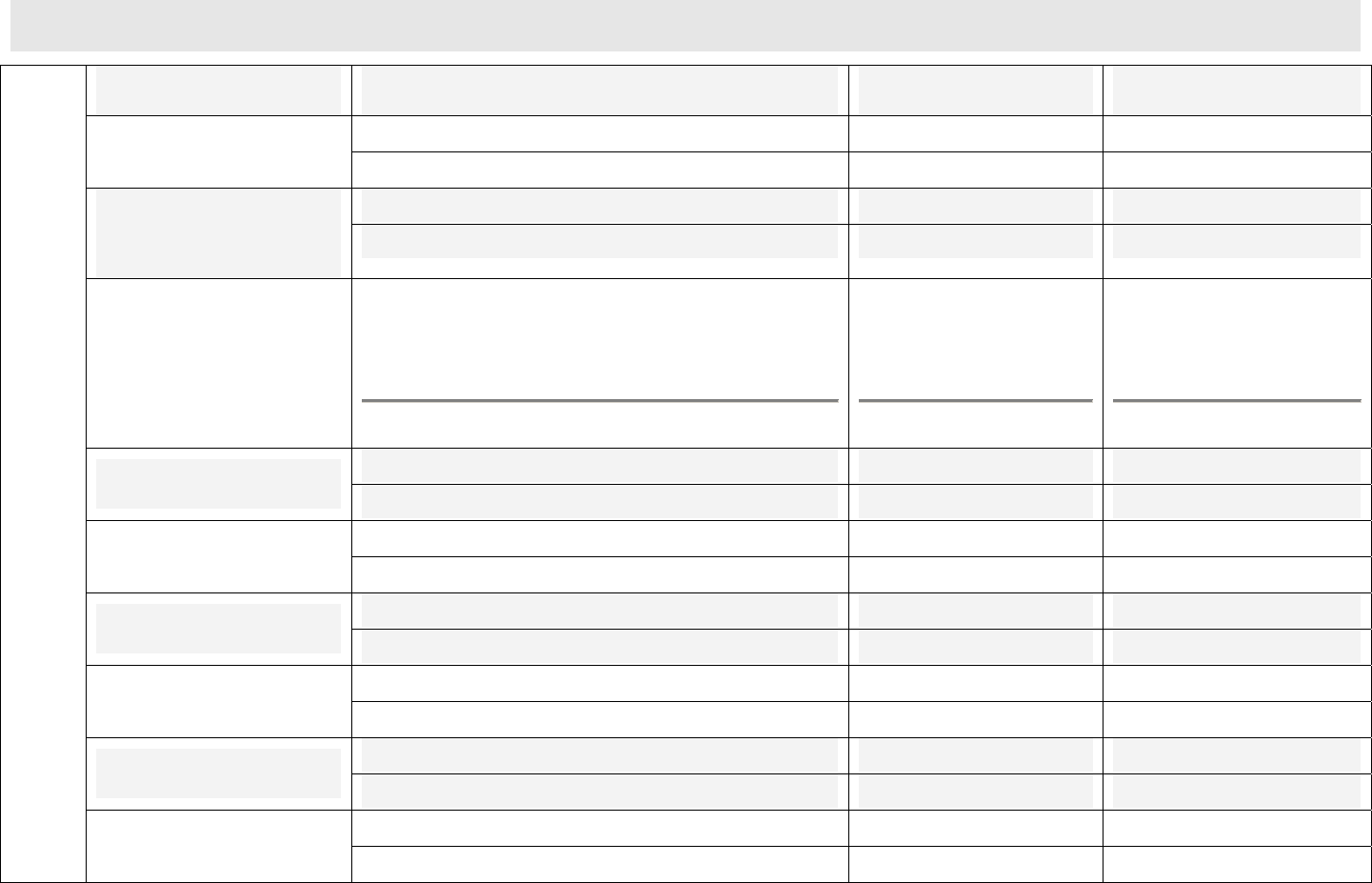
C
HECKLIST FOR AN
I
NTERNAL
A
UDIT
22
I
MPORTANT
R
ATIOS
160
R
ATIO
C
ALCULATION
L
AST
Y
EAR
T
HIS
Y
EAR
Cost Per Unit
Operating costs
Total portfolio
Loan Officer
Productivity
Number of active loans
Number of loan officers
Number of active clients
*
at beginning of period
Client Drop-out or
Increase
+ Number of new clients during the period
- Number of active clients at the end of the period
+
-
+
-
(=) Number of active clients at the end of the period
Staff Turnover
Number of staff who left
Average number of staff
Loans in Arrears
Loans in arrears
Total portfolio
Portfolios at Risk
Amount in arrears in the past 60 days
Total portfolio
Loan Loss Ratio
Loans written-off
Average Portfolio
Increase in Portfolio
(Ending portfolio - beginning portfolio)
Beginning portfolio
Increase in Savings
(Ending savings - beginning savings)
Beginning savings
* An “active client” is one with an outstanding loan during the period, which is not in arrears.

Appendix A
C
HECKLIST FOR AN
I
NTERNAL
A
UDIT
23
D
AILY
C
ASH
C
HECK AND
R
ECONCILIATION
P
ROCEDURES
FOR
B
RANCH AND
C
REDIT
M
ANAGERS
A Branch Manager i
s required to verify and reconcile the total cash on hand in three
separate records at the close of every working day. He or she checks all entries in the
Cash Book, the Cash Ledger and the Daily Cash Position, and then initials the recorded
total cash on hand for that day in each, if correct. The Branch Manager should use a
pen, preferably red, that is different in color from the one used to make the entries.
The Credit Manager, or next most senior person under the Branch Manager, is required
to weekly verify and reconcile the cash on hand in the same three documents. The
Credit Manager should also do so with a distinct pen color.
To begin each new business day, “yesterday’s” cash on hand is carried forward to
“today,” and becomes the day’s starting cash on hand. The amount is entered into the
cash records as “brought forward” (B/F).
The following are four sample scenarios involving the cash reconciliation process. For
all, 26 August 2005 is “yesterday’s date,” and 27 August 2005 is “today’s date.” At the
close of business yesterday, the cash on hand at this imaginary branch was 20,500
units; that amount was carried forward to become the starting cash on hand today.
Daily cash on hand is recorded in:
• The Cash Book – maintained by the regular Cashier
• The Cash Ledger – records various cash transactions
• The Daily Cash Position - where all transactions are totaled
S
CENARIO I
From 20,500 units starting cash on hand today, the branch disbursed 2,000 in loans to
various Village Banks. The branch received no reimbursements. The transaction
reduces today’s cash on hand to a closing total of 18,500 units.
Yesterday’s closing cash on hand
/
Today’s starting cash on h
and (20,500)
-
Total amount of cash disbursed today
(2,000)
=
Today’s closing cash on hand
(18,500)
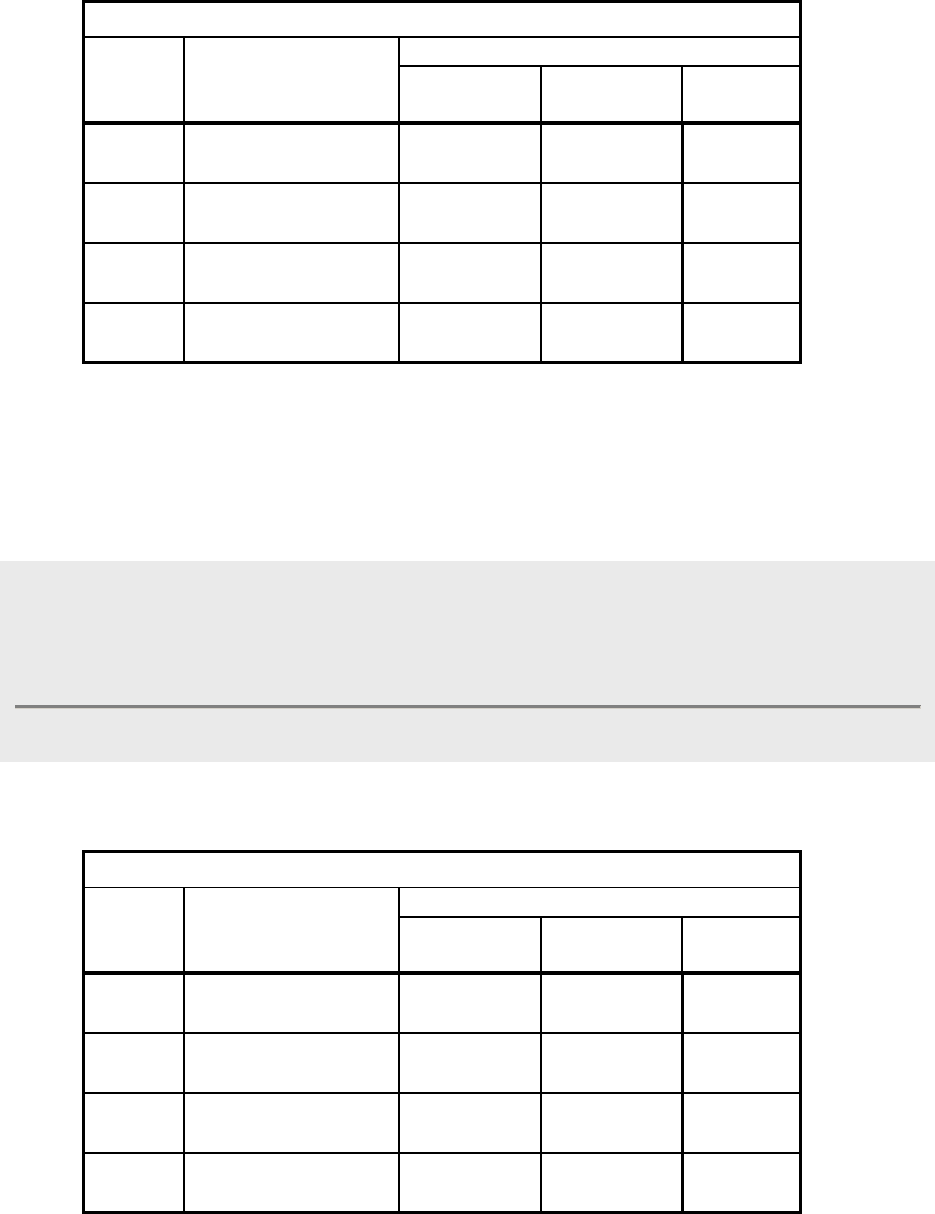
Appendix A
C
HECKLIST FOR AN
I
NTERNAL
A
UDIT
24
These transactions are documented in the Cash Book as follows:
Sample Cash Book page (Scenario I)
Total Cash Balance
Date Entry
Cash IN Cash OUT
Balance
(Reimbursement) (Disbursement)
Closing cash on
08/26/05 20,500
hand today
Cash B/F from
08/27/05 20,500
yesterday
08/27/05 Today's transactions (none) 2,000 18,500
Closing cash on
08/27/05 18,500
hand today
S
CENARIO II
The starting cash on hand is 20,500 units. Today, the branch receives reimbursement
(“cash in” from clients) totaling 10,500 units. The branch conducts no disbursements
today, and so the day’s final cash on hand is 31,000 units.
Yesterday’s closing cash on hand
/
Today’s starting cash on h
and (20,500)
+
Total amount of reimbursements received today
(10,500)
=
Today’s closing cash on hand
(31,000)
These transactions are documented in the Cash Book as follows:
Sample Cash Book page (Scenario II)
Total Cash Balance
Date Entry
Cash IN Cash OUT
(Reimbursement) (Disbursement)
Closing cash on
08/26/05
hand today
Cash B/F from
08/27/05
yesterday
08/27/05 Today's transactions 10,500 (none)
Closing cash on
08/27/05
hand today
Balance
20,500
20,500
31,000
31,000
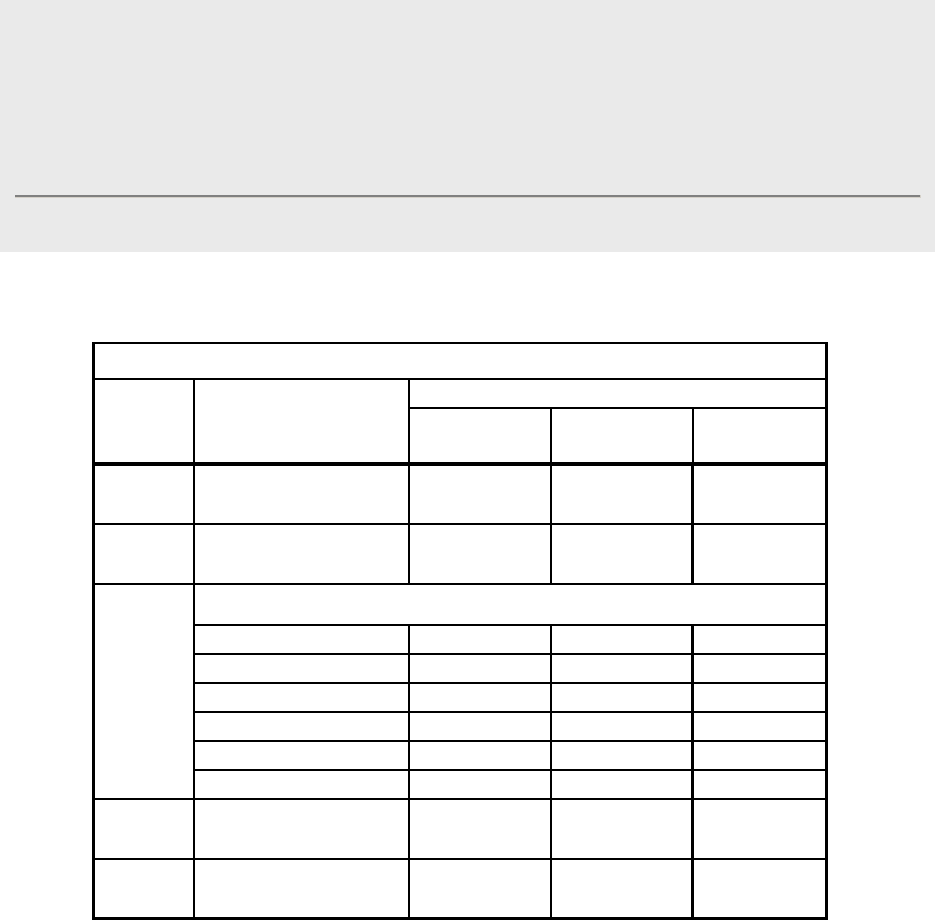
Appendix A
C
HECKLIST FOR AN
I
NTERNAL
A
UDIT
25
SCENARIO III
The branch’s starting cash on hand is 20,500. Today, the branch disburses 3,000 units in
loans to Village Banks, and receives 7,000 units in reimbursement. The transactions
result in an overall net cash on hand increase by 4,000 units, and a total of 24,500.
Yesterday’s closing cash on hand
/
Today’s starting cash on h
and (20,500)
-
Total
amount of cash disbursed today
(3,000)
+
Total amount of reimbursements received today
(7,000)
=
Today’s closing cash on hand
(24,500)
These transactions are documented in the Cash Book as follows:
Sample Cas h Book page (Sce nario III)
Total Cash Balance
Date Entry
Cash IN Cash OUT
(Reimbursement) (Disbursement)
Closing cash on
08/26/05
hand today
Cash B/F from
08/27/05
yesterday
Today's transactions
"Village Bank A" 2,300
"Village Bank B" 3,400
08/27/05
"Village Bank C" 1,300
"Village Bank D" 600
"Village Bank E" 2,000
"Village Bank F" 400
Today's transaction
08/27/05 7,000 3,000
totals
Closing cash on
08/27/05
hand today
Balance
20,500
20,500
22,800
26,200
27,500
26,900
24,900
24,500
4,000
24,500
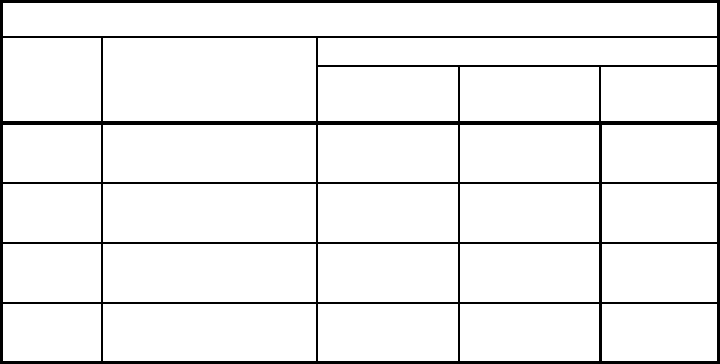
Appendix A
C
HECKLIST FOR AN
I
NTERNAL
A
UDIT
26
SCENARIO IV
The branch’s starting cash on hand is 20,500 units. Today, the branch disburses no
loans and receives no reimbursements. The branch’s cash position – that is, its cash on
hand – does not change.
These transactions are documented in the Cash Book as follows:
Sample Cash Book page (Scenario IV)
Date Entry
Total Cash Balance
Cash IN
(Reimbursement)
Cash OUT
(Disbursement)
Balance
08/26/05
Closing cash on
hand today
20,500
08/27/05
Cash B/F from
yesterday
20,500
08/27/05 Today's transactions (none) (none) 20,500
08/27/05
Closing cash on
hand today
20,500
Appendix B
C
HECKLIST FOR AN
I
NTERNAL
A
UDIT
27
I
NTERNAL
C
ONTROLS
I.
C
ASH
C
ONTROLS
a. Loan Disbursement
All loan application documents must meet requirements and must be verified as going to
genuine borrowers. Only after the Credit Agent, Credit Manager and Branch Manager sign all
loan documents can the cashier release funds.
To do this, the cashier prepares and signs a disbursement voucher, and the Branch Manager
and two Credit Agents sign it in full to approve. All disbursement vouchers and receipts must be
mechanically numbered in print (not by hand) in a continuous sequence. The original
disbursement voucher goes to the Village Bank with the cash funds, and a duplicate remains in
the receipt book, kept by the cashier.
At the Village Bank meeting, the Credit Agent delivers the cash to the Management Committee
President, who counts the money to confirm its amount, signs the disbursement voucher and
returns the voucher to the Credit Agent. Loan cash is distributed only to approved borrowers
themselves.
Loans are never issued by proxy.
The Management Committee Treasurer records
the amount of loan cash received by each client, and obtains the signature or thumbprint of each
client.
When all loans are disbursed, the Credit Agent and President sign the Credit Agent’s journal to
confirm the total cash distributed. If the cash amount listed on the disbursement voucher is not
distributed in full, the remaining balance is counted and confirmed by the Credit Agent and
President. The disbursement voucher must be amended, both in figures and in words, to show
the actual amount disbursed. The Credit Agent and President sign the alteration in full. Two
Credit Agents hold the un-disbursed cash and issue a receipt for the amount to the President;
upon returning to the office they give the amount to the cashier, and receive a receipt.
The two Credit Agents deliver to the cashier the disbursement voucher signed by the
Management Committee President, and the bookkeeper makes any necessary adjustments to
the records. If for any reason a disbursement voucher or receipt is cancelled, all copies remain
in the receipt books.
No new loan disbursement will take place if there are any arrears of the principal or interest of a
client’s existing loan, in either the external account or in special loans.
b. Loan Reimbursement
Daily, the Branch Manager and Credit Manager record the amount of cash that each Credit
Agent is expected to collect. Credit Agents must ensure that they have all necessary records
and materials before departing for the Village Bank repayment meeting.
At the meeting, the Management Committee President organizes the VB members so that they
approach the table to make repayments one at a time, systematically. When this is done, the
President hands the total amount of cash collected to the two Credit Agents. All the cash is
arranged by denomination. The two Credit Agents sign a receipt for the cash, and the President
also signs.
Upon returning to the office, the two Credit Agents deliver a reimbursement report and receipt to
Appendix B
C
HECKLIST FOR AN
I
NTERNAL
A
UDIT
28
the Credit and Branch Managers. The Credit Manager ensures that all repayments are recorded
accurately, and then signs the documents and delivers them to the Branch Manager, who also
scrutinizes the details before signing. The Branch Manager sends the report and receipt to the
cashier.
The cashier receives the cash from the Credit Agents for counting and reconciliation. If all is
correct, the cash is locked immediately in the safe, and the cashier issues a receipt to the Credit
Agents. On the same day, the cashier delivers the reimbursement records to the bookkeeper.
The cashier does not have access to the records after she or he has received, counted and
balanced the cash.
The Branch Manger daily checks all entries in the Cash Book, Cash Ledger, and Daily Cash
Position, and reconciles the final balance on all three documents before initialing. He or she
also reconciles the branch’s cash on hand with the entries on those books.
The cashier records all receipts and disbursement vouchers, along with the date, who delivered
it, to whom it is issued, the number of pages, the total amount of cash it represents. Every day
the cashier reconciles the receipt books and disbursement vouchers, and signs beside the
remaining balance.
All unused receipt books and disbursement vouchers should be kept in a locked cabinet.
c. Revenue Collection
The Credit Agents, Credit Manager and Branch Manager ensure that an accurate interest rate is
calculated for every loan disbursed. If any amount of interest or principal on any loan is in
arrears, no new loans may be disbursed to anyone in the entire group.
The Branch Manager ensures that interest due is collected on the date due, and that it is
credited to the appropriate interest receivable account. The Branch Manager also prepares a
monthly statement comparing branch costs and revenues.
d. Petty Cash
The Head Office fixes the petty cash limit for each branch, and remits that amount to the branch.
Under no circumstances should branch cash be used as petty cash. The stock of petty cash
should be kept up so that it is never depleted. Petty cash is released only if the person receiving
it gives a signed receipt.
The bookkeeper records daily petty cash in and out. The Credit Manager reconciles the petty
cash balance daily, as does the Branch Manager weekly on an irregular schedule.
The cash box should be locked in the safe overnight.
e. Client Savings
The Branch Manager ensures client savings records are kept accurately, and that clients
observe the compulsory savings requirement. The Branch Manager also ensures that client
savings cash is recorded in the Cash Book, Cash Ledger and Daily Cash Position records.
II. W
HERE
M
OST
F
RAUDS AND
F
ORGERIES
O
CCUR
Loans to “ghost clients” (fraudulent identities);
Appendix B
C
HECKLIST FOR AN
I
NTERNAL
A
UDIT
29
Loans distributed by proxy;
Loan capital being shared between borrower and staff;
Credit Agents using loan collections for personal use with the intent to pay them back later;
New loans granted to hide arrears;
New loans taken to pay other loans;
New loans taken to cover the compulsory savings requirement;
Payment of non-existent bills;
Theft of client savings by staff or Management Committee members;
Multiple loans to the same individual (within one Village Bank, using multiple names, or at
multiple Village Banks using the same or multiple names); or
Staff thefts.
III. M
INIMIZING
F
RAUDS AND
F
ORGERIES
Assume that anyone can be tempted to commit fraud. Be aware of sudden, inexplicable,
unplanned or unexpected significant increases or decreases in a portfolio. Assume intelligence
in the design and cover of the act. Follow every suspicion to its conclusion. Regularly rotate
staff at all levels, including the Credit Manager. Pay and treat your staff well, and be firm, fair
and impartial in your dealings with staff. Operate with zero tolerance for frauds and dishonesty.
Adhere to documented procedure and policy strictly and without lapses to discourage staff from
taking advantage of gaps in protocol. Document all procedures, policies, and systems to ensure
that each duty and responsibility is explained fully in writing.
If you do not have sufficient time to check a document properly before you sign it, do not sign it.
Do no sign any vouchers unless all supporting documents are attached. Always have the
person preparing, the person checking, and the person approving any voucher sign it. Always
write number amounts in both words and figures, and leave no space to add more figures.
Maintain separation of duties – for example, a cashier should not handle accounting, or have
access to accounting records.
Obtain as much information possible about a client, including a photograph, before the first loan
is disbursed. Have more than one Credit Agent attend disbursement and reimbursement
meetings. As a part of your internal auditing duty, visit several clients to confirm with them the
amounts they borrowed, and that that information confirms the records. Outside of your auditing
duties, occasionally talk to clients, and even to non-clients: you may receive helpful information.
All records should be written clearly and in ink, and access to all records must be restricted to
authorized staff only.
Appendix B
C
HECKLIST FOR AN
I
NTERNAL
A
UDIT
30
IV. C
OST
C
ONTROLS
Reuse items and materials as much as possible. Only essential items should be purchased,
and are to be approved by Head Office and fit within the branch budget. Prior to the purchase of
any items, at least three different price quotations must be obtained. Exceptions to that
procedure for
only the following
expenditures:
• Rent paid according to the current lease
• Fuel and oil for vehicles, motorbikes, and generator
• Water and electric utilities
•
Minor
vehicle or motorbike repairs
• Small office supplies such as pens, pencils or notebooks
• Photocopies
As often as every quarter, review the number and type of branch staff positions in relation to the
total number of clients, the total branch portfolio and number of Village Banks, to determine
whether the staff may be excessive.
When considering a proposed new Village Bank site, always take into consideration the distance
from the branch office. A motorbike ride of more than one hour likely exceeds acceptable costs
in fuel, time and security of cash or staff in transit.
Control the expenditure of office supplies, particularly computer supplies, and restrict the use of
vehicles and motorbikes to branch business only. Likewise, monitor access to telephones so
that personal expenditures to the branch are minimized; one staff member may be designated to
place all outgoing calls. Ensure that the branch’s fixed assets – such as computers and furniture
– are protected.
From cycle to cycle, monitor changes in loan size, the number of active clients, and the increase
or decrease of the branch portfolios; the number and size of loans affects overall costs.
Training is essential for continued growth and sustainability of a branch, but ensure that
trainings are relevant to staff development and do not unduly inhibit productivity.
If a consultant must be hired, the need must be clearly defined in advance, and the individual’s
cost and credentials verified and reconciled to the branch budget. Hiring and training of new
staff is also expensive. Whenever possible, senior management – a CEO or COO – should sit
down with a staff member who declares his or her resignation in order to determine if he or she
might be persuaded to stay.
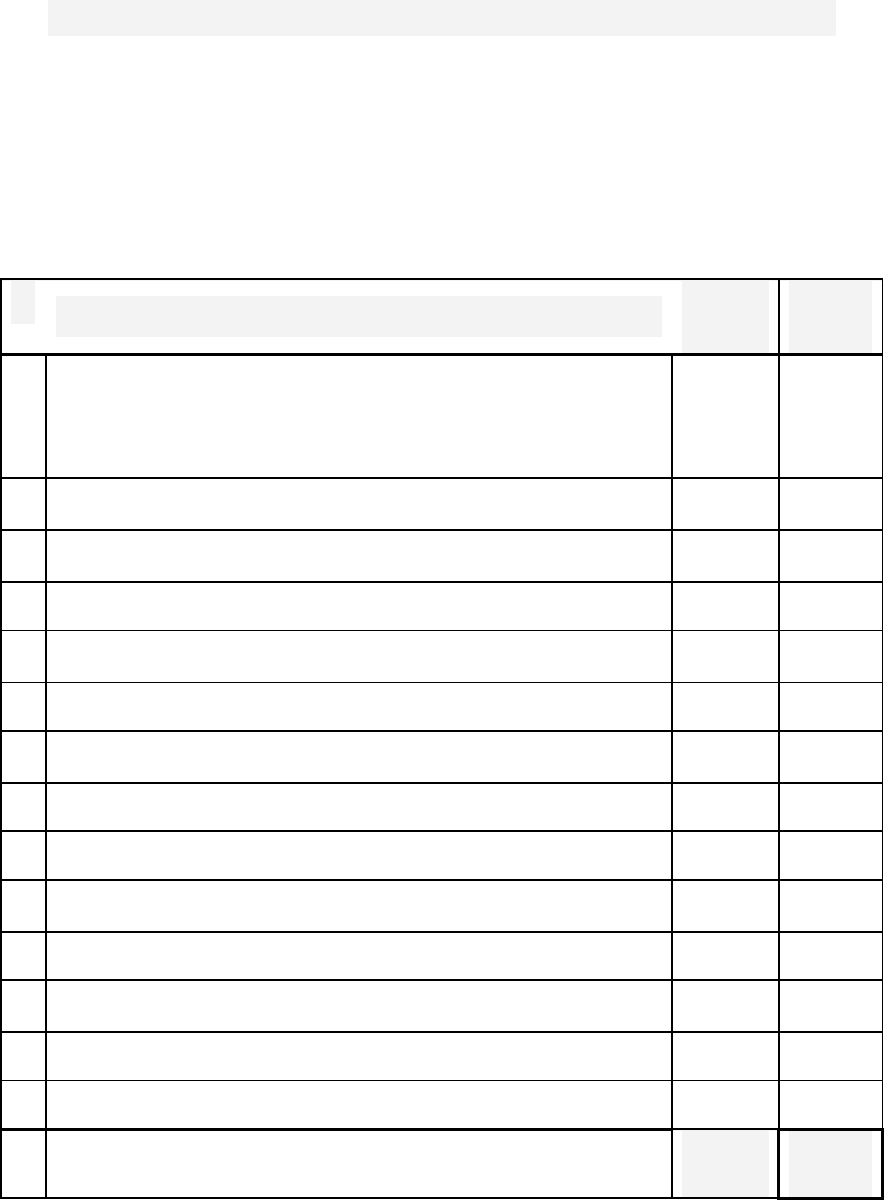
Appendix C
CHECKLIST FOR AN INTERNAL AUDIT 31
Credit Inspection Internal Audit Report
(Page 1 of 2)
B
RANCH
N
AME
:
Ratings key:
Please make your assessments by percentage point (to be totaled and compared).
Excellent: 100%
Good: 90% or better
Satisfactory: 80% or better
Unsatisfactory: Less than 80%
Evaluation Categories
Previous
Audit
Current
Audit
1
The branch conducts client baseline surveys prior to choosing a Village
Bank site.
Gauge how much information is gathered, how it is gathered, how the
information is analyzed, whether the branch adequately uses the
information, etc.
2
The branch promotes client business plans that in the auditor’s opinion
are intelligent and attainable.
3
New Management Committee members
properly trained.
and Village Bank members are
4
Client thumbprints or signatures appear on all loan contracts.
5
Loan approval policies and procedures are strictly and consistently
followed.
6
Loan disbursement procedure is strictly and consistently followed.
7
The growth rate in the
acceptable.
loan portfolios is in the auditor’s opinion
8
Less than 1% of portfolios are at risk in one calendar year.
9
Overdue debts are written-off for the year in which they occur.
10
Reimbursement records are free from arrears on
loans
any external or internal
11
The collection of arrears occurs with prompt and continuous action.
12
Interest due the
consistently.
branch is calculated accurately and collected
13
Client files are properly protected.
14
Client drop-out is recorded and monitored.
Overall Total

Appendix C
CHECKLIST FOR AN INTERNAL AUDIT 32
C
REDIT
A
UDIT
I
NSPECTION
S
UMMARY
(Page 2 of 2)
1. This credit inspection of ________________
(branch name)
commenced on
__________
(date)
and was completed on __________.
2. Based on percentage assessments in the fourteen control categories, the
branch achieved an overall performance rating of _______ percent for the
current year.
3. The current audit rating of _______ percent is an improvement / decline
(circle one)
from the overall rating of the previous audit.
4. Improvement or decline is noted in the following areas:
5. In order to improve its overall credit rating, the branch should ensure that all
irregularities identified by this audit report are corrected. The following are
suggested actions toward noted shortcomings:
The Branch Manager acknowledges the content of this report, and has discussed
any concerns with the auditor. Any items of disagreement between the Branch
Manager and the auditor regarding this report are to be documented in an attached
list.
Please check one
:
See attached list
No disagreements noted
Signed, Date:
______________________________ __________________
Branch Manager
______________________________ __________________
Internal Auditor (or Internal Audit Manager)
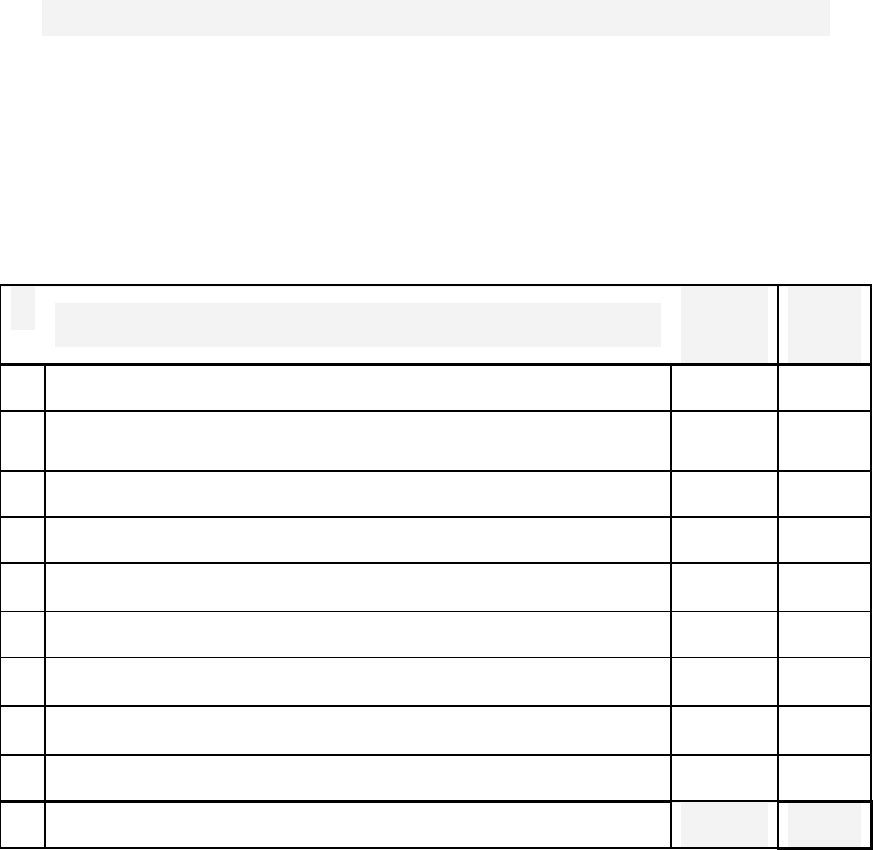
Appendix D
CHECKLIST FOR AN INTERNAL AUDIT 33
F
INANCIAL
S
ERVICES
I
NTERNAL
A
UDIT
R
EPORT
(P
AGE
1
OF
2)
B
RANCH
N
AME
:
Ratings key:
Please make your assessments by percentage point (to be totaled and compared).
Excellent: 100%
Good: 90% or better
Satisfactory: 80% or better
Unsatisfactory: Less than 80%
Evaluation Categories
Previous
Audit
Current
Audit
1
Personnel policies and active procedures are consistent.
2
Supervision of staff is adequate and in the auditor’s opinion
effective.
3
Administrative policies and active procedures are consistent.
4
Accounting policies and active procedures are consistent.
5
In the auditor’s opinion, the branch’s
effective.
internal controls are
6
Expenses, costs and income are traceable and reasonable.
7
Daily and weekly cash reconciliation and
consistent.
records-keeping is
8
Communication between management and staff is in the auditor’s
opinion effective.
9
Cash and fixed assets are protected.
Overall Total

Appendix D
CHECKLIST FOR AN INTERNAL AUDIT 34
F
INANCIAL
S
ERVICES
I
NSPECTION
S
UMMARY
(Page 2 of 2)
6. This credit inspection of ________________
(branch name)
commenced on
__________
(date)
and was completed on __________.
7. Based on percentage assessments in the fourteen control categories, the
branch achieved an overall performance rating of _______ percent for the
current year.
8. The current audit rating of _______ percent is an improvement / decline
(circle one)
from the overall rating of the previous audit.
9. Improvement or decline is noted in the following areas:
10. In order to improve its overall credit rating, the branch should ensure that all
irregularities identified by this audit report are corrected. The following are
suggested actions toward noted shortcomings:
The Branch Manager acknowledges the content of this report, and has discussed
any concerns with the auditor. Any items of disagreement between the Branch
Manager and the auditor regarding this report are to be documented in an attached
list.
Please check one
:
See attached list
No disagreements noted
Signed, Date:
______________________________ __________________
Branch Manager
______________________________ __________________
Internal Auditor (or Internal Audit Manager)
Appendix E
C
HECKLIST FOR AN
I
NTERNAL
A
UDIT
35
J
OB
D
ESCRIPTION FOR AN
I
NTERNAL
A
UDITOR
Working Relationships
Under direction of the Internal Audit Manager, an Internal Auditor (IA) coordinates and
communicates closely with branch staff, the Branch Manager, Credit Manager, and with
managers in the Head Office. The IA must also work closely with Village Bank
Management Committee members, clients and village leaders to obtain information
relevant to the confirmation of branch records and operations.
Job Statement
Reporting directly to the Internal Audit Manager, the IA is responsible for systematically
examining all of a branch’s financial transactions to ensure the accuracy and adequacy
of accounting records and systems, and to locate and identify discrepancies, if any.
Duties and Responsibilities
1. To check the branch’s adherence to personnel management and
administrative policies;
2. To check branch compliance with accounting and internal control protocol by:
• Confirming authorization for cash disbursement and office expenses;
• Scrutinizing accounts classification;
• Scrutinizing cash handling procedures;
• Confirming a separation of duties such as prohibits opportunities for fraud;
• Confirming the safekeeping of cash and files; and
• Assessing the adequacy of staff volume to the branch’s current level of
business.
2. To verify balances in client savings, external accounts, and internal accounts
at three levels. The IA ensures the accuracy of Village Banks’ financial
records in Credit Agents’ journals and reports, in Management Committee
documentation, and in clients' passbooks.
3. To check the branch’s adherence to procedures for Village Bank meetings
and financial records-keeping, and aptitude in transferring skills and
knowledge to clients.
4. To ascertain the existence and true value of accounts by:
• Counting and reconciling cash on hand with the Daily Cash Journal;
• Confirming balances of inventories, loans, repayments, etc;
• Scrutinizing the rate of aging on receivables; and
• Confirming account value information with creditors and debtors.
Appendix E
C
HECKLIST FOR AN
I
NTERNAL
A
UDIT
36
5. To check allocated budgets against actual expenditures to report any
discrepancies;
6. To check the inventory list and depreciation schedule. The IA will confirm that
the branch’s assets agree with its official inventory list, and that its fixed
assets are accurately and consistently depreciated;
7. To discuss the audit process with branch management and staff prior to
conducting it, and afterward to clarify initial findings and recommendations;
8. To prepare audit reports; and
9. To ensure the branch’s compliance of audit recommendations.
Terms of Work
For an IA to be effective and efficient in fulfilling the duties of the position, he or she must
be provided with computer/technical assistance, training opportunities to continually
upgrade his or her financial auditing knowledge, and relevant support and direction from
the Audit and Finance Committee of the Board of Directors.
Minimum Competencies for an Internal Auditor
• Financial auditing experience, preferably within a financial institution;
• Working knowledge of financial planning, including budgeting and
accounts projection;
• Ability to prepare external and internal financial statements;
• Ability to detect and interpret patterns in financial data;
• Ability to assess and improve financial systems and procedures;
• Familiarity with accounting and auditing procedures generally;
• Excellent spreadsheet analysis skills;
• Attentiveness to detail, ability to manage multiple tasks and meet
deadlines;
• Supervisory experience and ability to be impartial;
• Interest in helping the poor and marginal sectors of society;
• Character of integrity and honesty;
• Ability and willingness to identify frauds and forgeries;
• Excellent communication skills in written and spoken English.
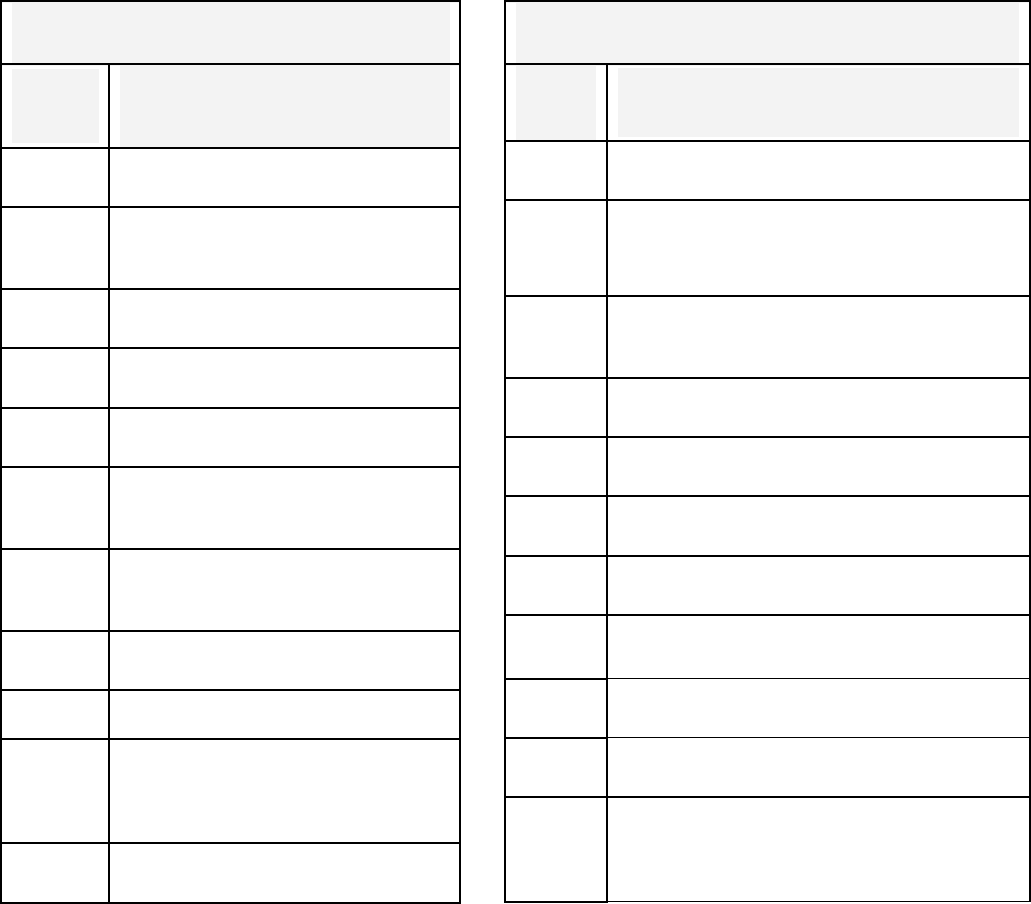
Appendix F
C
HECKLIST FOR AN
I
NTERNAL
A
UDIT
37
S
INGLE
-
AND
D
OUBLE
-S
TARRED
C
HECKLIST
I
TEMS
As referred in the Introduction, some items in the checklist are marked with either a
single (*) or a double (**) asterisk. The following is a consolidated list of these especially
important points.
*
Checklist
number
If your answer is “no,” the issue
requires urgent remedial action.
5
Are all doors and windows well
secured to prohibit forced entry?
6
Are at least two different keys
required to unlock the building’s
doors?
8
Is the strong room secured to
prohibit forced entry?
9
Is the safe fixed to the wall or floor to
prevent its removal?
14
Do duplicate safe keys and
combinations exist?
15
Are there written procedures to
access the duplicate keys and
combinations?
16
Are receipts kept whenever duplicate
keys or combinations leave or enter
the safe?
24
When a receipt is cancelled, are all
three copies left in the receipt book?
28
Is the branch cash limit observed?
29
Did you undertake a random check
of at least 50% of all cash
transactions in the cashbook to
confirm that the entries are correct?
46
Are all vehicles and motorbikes fully
insured and licensed?
**
Checklist
Number
If your answer is “no,” the issue
denotes a critical situation.
7
Are at least two different keys required to
unlock the strong room (safe room) door?
10
Do safe custodians issue receipts for all cash
received, and are copies of those kept in the
safe?
11
Are all changes of custodian for safe key and
combination, and the date and time of each
change, recorded in a register?
12
Are the safe key and combination held
separately at all times by senior staff?
13
Do outgoing and incoming safe custodians
sign next to the change entries?
17
Is the safe opened only in the presence of
more than one custodian?
18
Before the safe is opened, are the main door
and the door to the strong room locked?
19
Are all cash movements to and from the safe
recorded in a cashbook?
20
Are entries in the cashbook and on receipts
recorded in both figures and words?
21
Do the figures and words in all entries
agree?
26
Does the total cash count reconcile with the
recorded total in the cashbook, the cash
journal and in the daily cash position
register?

Catholic Relief Services founded in 1943, assists the poor and
disadvantaged outside the United States. CRS works in solidarity with all
people of good will and similar vision to promote human dignity, alleviate
human suffering, promote the development of people, and foster charity,
justice, and peace in the world. CRS assists the poor solely on the basis of
need, not creed, race, or nationality, and maintains strict standards of
efficiency and accountability. CRS currently operates in 99 countries and
territories and supports microfinance activities in 29 countries.
,
CRS Microfinance
South East Asia
Cambodia
East Timor
Indonesia
Philippines
Thailand
Europe
Armenia
Bosnia-Herzegovina
Bulgaria
Croatia
Macedonia
Latin America and the
Caribbean
Ecuador
El Salvador
Guatemala
Haiti
Nicaragua
Peru
West Africa
Benin
Burkina Faso
Ghana
Niger
Senegal
Eastern Africa
Ethiopia
Uganda
Middle East and North Africa
Egypt
Jerusalem, West Bank, and Gaza
Morocco
Turkey
South Asia
India
Pakistan
